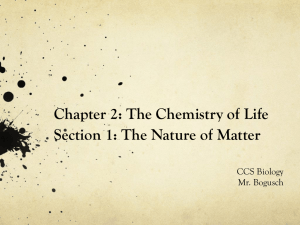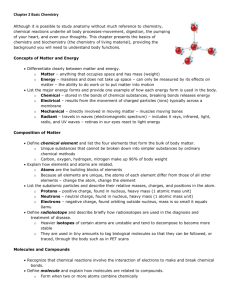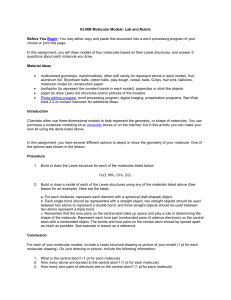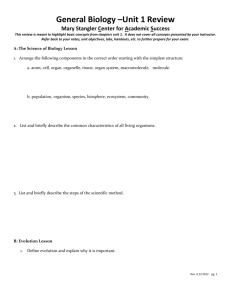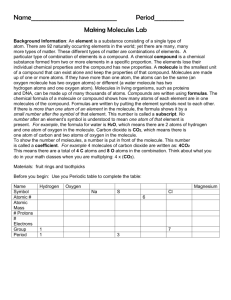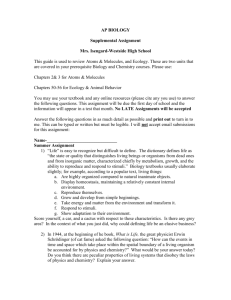waterMolecule
advertisement
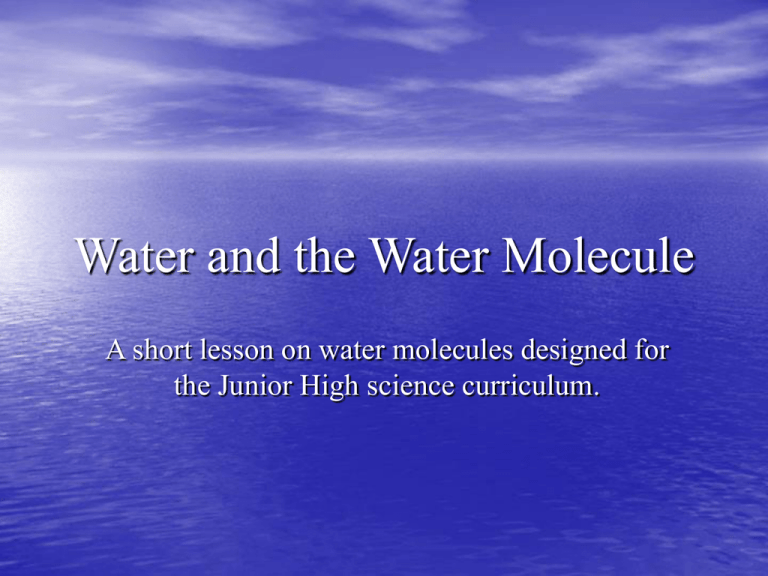
Water and the Water Molecule A short lesson on water molecules designed for the Junior High science curriculum. This lesson will… Define the term molecule. Outline the formation of a water molecule. Introduce the characteristics that make water so unusual. Image retrieved from: http://www.accs.net/users/kriel/chapter%20seven/water%20polar.gif Before we start, let’s quickly review the definition of an atom. An atom is the smallest possible particle of a chemical element. Electron (-) Nucleus (+) Hydrogen Atom The Molecule A molecule is a group of two or more atoms held together by chemical bonds. Water is a molecule. Ever hear someone call water, H2O? Chemical Bonds Definition: The energy relationship between two or more atoms that hold them together. Chemical bonds are formed when electrons are shared between atoms or moved from one atom to another. O H H We call it H2O because water molecules are formed when electrons are shared between two Hydrogen atoms and one Oxygen atom. The Water Molecule The angle formed by the 2 Hydrogen atoms and the 1 Oxygen atom is about 105°. Water molecules have a positive (+) and 2negative (-) end. This makes it attract to other water molecules. + H O 105° H + Hydrogen Bonds Hydrogen bonds form Hydrogen Bond when the positive (+) end (the H atom) of one water molecule is attracted to the negative (-) end (the O atom) of another water molecule. Cohesion & Adhesion Hydrogen bonds influence the properties of water by allowing individual water molecules to stick to each other. This is called cohesion. Cohesion gives water it’s surface tension. Ever see an insect walk on water? Adhesion allows water to stick to solid materials and make them wet. Water The most abundant molecule of earth. About 70-75% of the earth’s surface is liquid and solid water. Water molecules are also found in our atmosphere in the form of vapor. The only pure substance found naturally in all three states of matter – liquid, solid, gas. About the Author Mark Riley is a second year graduate student in the Curriculum & Instruction program at Ohio University. Please contact him by email at mr389997@ohio.edu Click the button to restart this PowerPoint. References Garrison, T. (2006). Essentials of Oceanography (4th ed.)(p. 108). Belmont, CA: Thomson Brooks/Cole. http://en.wikipedia.org/wiki/Water_(molecule) http://en.wikipedia.org/wiki/Molecule




